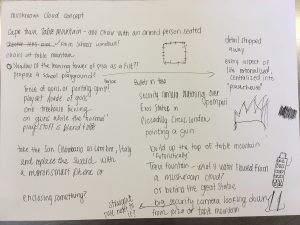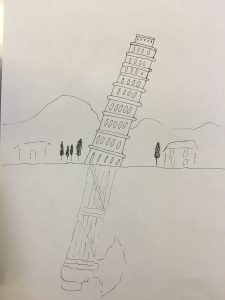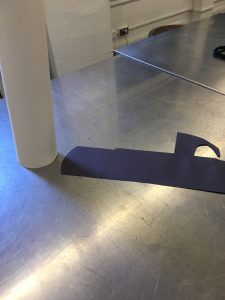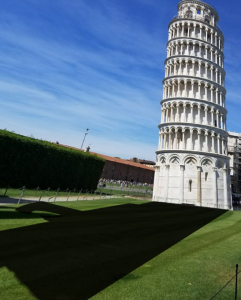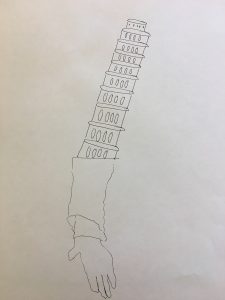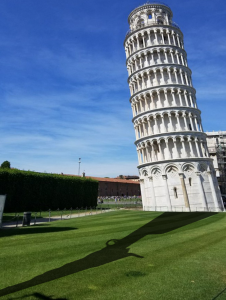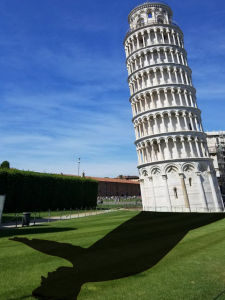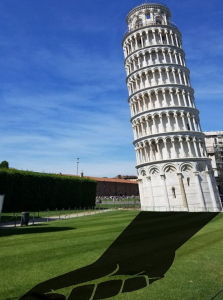For Bridge 4, we were prompted to specify a site-based intervention or exchange. We had to propose a meaningful interaction or alteration to the way the public engages with the site or place (it could be material and conceptual.) We must pay attention to the context and audience that will visit this site. We asked questions like “Who is the work for?” and “How does it engage that public in that space?”
I explored many different ideas on my ongoing blog (Bridge 1) and hit a SERIOUS creative block. Just a little snippet of what that looked like…
Some of my ideas included:
After what seemed like hours, I finally decided on the Leaning Tower of Pisa and using the idea of a unrealistic shadow. You can reed about it in my proposal below:
Bridge 4 Proposal
The leaning tower of Pisa is an Italian monument built in the 12th century and known for its unusual and nonintentional tilt. The tower is a bell tower accompanying the Cathedral of Pisa adjacently behind it. Numerous efforts have been made to restore the tower to a vertical orientation but in 1964 the government of Italy requested aid in preventing the tower from toppling, not to keep it up straight. It is important retaining the current tilt due to the role that this plays in promoting the tourism industry of Pisa. Pisa is Located in Tuscany, Italy and has millions (around 4.5 to be exact) of both international and domestic visitors every year. Italy is home to the National Fascist Party, a political movement similar to communism and not recognized or spoken about as the Holocaust is, for example. Just as Hitler’s followers had a flag, so did the Mussolini followers. The original symbol of fascism is a fasces (an ancient Roman symbol of power carried by civil servants in front of magistrates.) This is a bundle of sticks featuring an axe (indicating the power over life and death.) Before the Italian Fascists adopted the fasces, the symbol had been used by Italian socialists and nationalists as a symbol of strength through unity.
In this installation, I want to replicate a life size ‘shadow’ of the Leaning Tower of Pisa. Instead of being a realistic shadow, though, it will be the silhouette of the Fasces. Through this I hope to awaken citizens of Italy to reflect on the past, and recognize that their government is not consistent in its leaders. For tourists, it might not mean much, compelling them to research what the installation is about and maybe learning something new about Italy’s past.
Overall as an artist, I hope to make a statement about what boundaries art can take on. Glorifying and enlarging a symbol of a totalitarian rule can be controversial, but this shows how art is influenced by politics. My research paper is about the influence of Fascism on the Futurist art movement, and by using a piece of art (or architecture in this case) and forcing a political connotation onto it, I hope to show how the Futurists were one with the Fascist principles in their creating.
After creating a mock up and photoshop test, I discovered that my Fasces symbol might not be the best shadow to use.
So I experimented with other shadow symbols that might be more clear:
